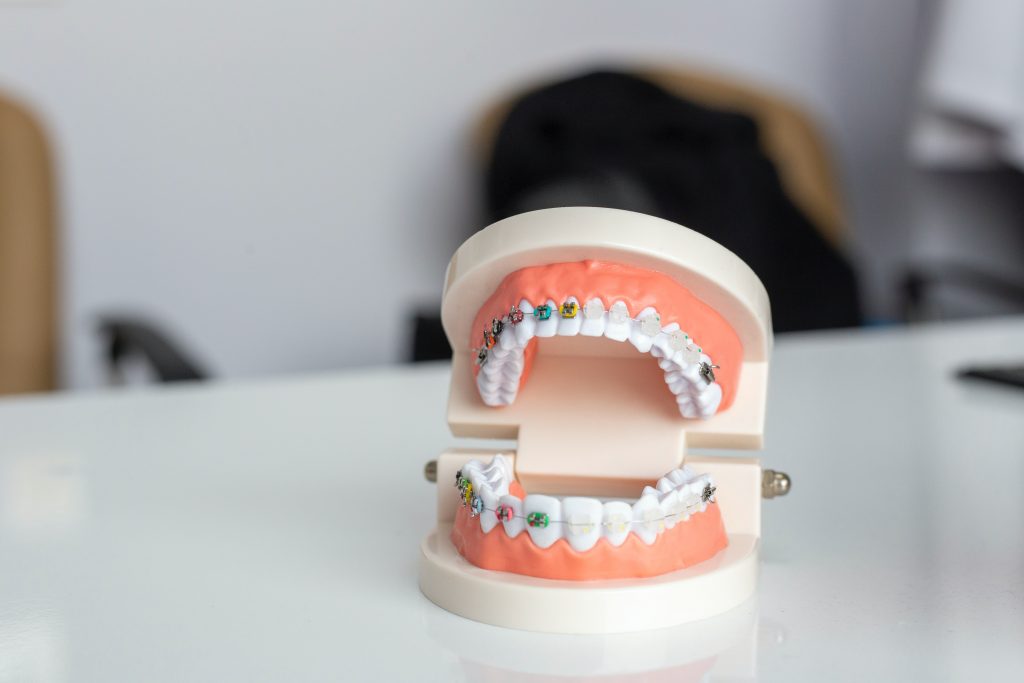Similar to adults, children can suffer from various dental issues. Early identification and prompt treatment of these problems can prevent complications and ensure a healthy smile. Let’s look into these common dental problems, know their causes and symptoms, and explore preventive strategies.
Common dental problems in children
Tooth decay
Tooth decay in children is often called early childhood caries or cavities. It occurs when sugar-eating bacteria in the mouth produce acids that attack the tooth enamel (the outermost layer). Over time, these repeated attacks can lead to the breakdown of tooth enamel, resulting in cavities.
Tooth decay can occur when a child’s first tooth emerges, typically around six months of age. Early childhood caries often affect the upper front teeth, but other teeth can also be involved. Signs of tooth decay in children can include white or brown spots on the teeth, visible holes in the teeth, or sensitivity or pain in severe cases.
There are several risk factors for tooth decay in children, including:
- Frequent consumption of sugary foods or drinks
- Going to bed with a bottle of milk, formula, juice, or other sweet drink
- Poor oral hygiene habits
- Limited exposure to fluoride
- Lack of regular dental check-ups
It is crucial to start good oral hygiene habits early to prevent tooth decay in children. These habits include wiping baby’s gums with a soft, damp cloth after feedings, brushing teeth as soon as they emerge, limiting sugary foods and drinks, and scheduling regular dental check-ups. Additionally, drinking fluoridated water or using a small amount of fluoride toothpaste (starting at age 2, unless advised otherwise by a dentist) can help strengthen a child’s teeth and prevent decay. In Singapore, the Ministry of Health requires the water supply to be fluoridated.
Gum disease
Gum disease, also known as periodontal disease, is not as common in children as in adults, but it can still occur, particularly as gingivitis. It is an inflammation of the gums caused by plaque build-up along the gum line due to poor oral hygiene.
Gingivitis is the earliest stage of gum disease and is often characterized by red, swollen, and bleeding gums, especially during brushing and flossing. It’s largely preventable and reversible with good oral hygiene practices, including proper brushing, flossing, and regular professional dental cleanings.
If left untreated, gingivitis can progress to a more severe form of gum disease called periodontitis, which can damage the bone and tissues that support the teeth and lead to tooth loss. However, this condition is extremely rare in children.
Certain factors can increase a child’s risk of developing gum disease, including poor oral hygiene, a diet high in sugar, certain medical conditions (such as diabetes or immune disorders), and hormonal changes during puberty.
To prevent gum disease in children, it’s essential to:
- Teach good oral hygiene habits from a young age, including proper brushing and flossing techniques.
- Encourage a balanced, low-in-sugar diet to help reduce plaque build-up.
- Schedule regular dental check-ups and cleanings to remove plaque or tartar build-up and identify any signs of gum disease early.
- Encourage children to communicate any changes or discomfort they notice in their mouth, such as red, swollen, or bleeding gums, to address it promptly.
Malocclusion
Malocclusion refers to the misalignment of teeth or incorrect relationship between the teeth of the two dental arches. In children, malocclusion can occur for various reasons and often becomes noticeable as permanent teeth emerge, typically around age 6 or 7.
Typical forms of malocclusion in children include:
Overbite: This occurs when the upper front teeth significantly overlap the lower front teeth when biting down.
Underbite: This occurs when the lower teeth are further forward than the upper teeth, which is the opposite of the normal alignment.
Crossbite: This occurs when some of the upper teeth bite inside the lower teeth instead of outside.
Open bite: This occurs when the upper and lower front teeth don’t overlap when biting down, leaving a space between them.
Crowding: This is when there isn’t enough space in the jaw for all the teeth to fit normally, leading to teeth coming in twisted or displaced.
Spacing: This is when there are gaps or spaces between the teeth because teeth are missing or the teeth don’t fill up the mouth.
Causes of malocclusion in children include genetics (inherited traits), early loss of baby teeth, thumb-sucking or prolonged use of a pacifier or bottle, and other habits such as tongue thrusting. Some medical conditions that affect the shape and size of the jaw or teeth can also cause malocclusion.
While not all forms of malocclusion need treatment, significant malocclusion can lead to problems with eating, speaking, and keeping the teeth clean. It can also affect a child’s self-esteem and facial appearance.
Orthodontic treatment, which may involve braces or other devices, can help correct malocclusion in children. Treatment often starts in the early teenage years, once most permanent teeth have come in, but it can sometimes begin earlier if necessary. In some cases, early orthodontic evaluation (around the age of 7) can help detect potential issues and guide growth and development to prevent more severe problems later. About Braces provides teeth straightening services to patients of all ages, giving them higher self-esteem in their desired smiles.
Tooth Sensitivity
Tooth sensitivity in children can be pretty common, especially as they start losing their primary (baby) teeth and their permanent teeth begin to emerge. It refers to a temporary pain or discomfort in the teeth when exposed to certain stimuli, such as cold or hot foods and drinks, sweet or acidic foods, and cold air.
Here are some common causes of tooth sensitivity in children:
Tooth Decay: Cavities can expose the tooth’s inner layers, leading to sensitivity when the teeth come in contact with certain foods and drinks.
Gum Recession: If the gums recede (pull away from the teeth), they can expose the root surfaces of the teeth, which are not covered by hard enamel and are thus more sensitive.
New Teeth: When new teeth are coming in, it’s normal for a child to experience some discomfort or sensitivity in the area.
Enamel Erosion: Consuming too many acidic foods or drinks, or brushing the teeth too hard, can wear away the tooth enamel and expose the dentin, leading to sensitivity.
Fractured Teeth: A cracked or chipped tooth can cause discomfort and sensitivity.
Dental Procedures: Some dental procedures, such as fillings or dental cleanings, can cause temporary tooth sensitivity.
Sinus Infections: In some cases, a sinus infection can cause tooth sensitivity due to pressure in the maxillary sinus just above the upper back teeth.
Tooth injuries
Tooth injuries in children are relatively common, particularly in those who are learning to walk, those who are active in sports, or those prone to falls and accidents. The extent and type of injury can vary from minor chips or cracks to more significant damage, such as a knocked-out (avulsed) tooth.
Common types of tooth injuries in children include:
Chipped or Cracked Tooth: This can occur when a piece of tooth enamel is broken off. It may require smoothing if it’s minor and doesn’t cause pain. A dentist may need to apply a filling or crown for larger chips or cracks.
Dislodged (Luxated) Tooth: In this situation, the tooth has been partially pushed into or out of its socket or knocked sideways but is not completely knocked out. A dentist may need to reposition and stabilize the tooth.
Knocked-Out (Avulsed) Tooth: This is a serious dental emergency. If it’s a permanent tooth, it may be possible to re-implant it if you get to a dentist quickly (ideally within an hour). The tooth should be handled carefully by the crown (the top part), rinsed gently without scrubbing, and kept moist, preferably in milk or a tooth preservation product, until reaching a dentist.
Root Fractures: These are cracks or breaks in the tooth’s root, often beneath the gum line. They can be challenging to identify without a dental x-ray.
To prevent tooth injuries in children, consider the following precautions:
- Use safety gates for toddlers who are learning to walk.
- Encourage children to use mouthguards when playing sports or participating in recreational activities that could pose a risk of falls or face injuries.
- Childproof your home to eliminate potential sources of falls or trips.
- Supervise children during activities that might result in tooth injuries.
- If a child experiences a dental injury, seeking dental advice as soon as possible is important, even if the damage seems minor. This can help prevent complications and ensure the best possible outcome.
While this guide provides a broad understanding of common dental issues in children, remember that every child’s dental needs are unique. Regular dental check-ups are essential in preventing dental problems, ensuring early detection, and initiating timely treatment.
Moreover, parents play a crucial role in shaping their children’s oral hygiene habits. By teaching them the importance of brushing and flossing, limiting sugary snacks, and maintaining regular dental visits, they are set for a lifetime of healthy smiles 🙂







Join the discussion 3 Comments